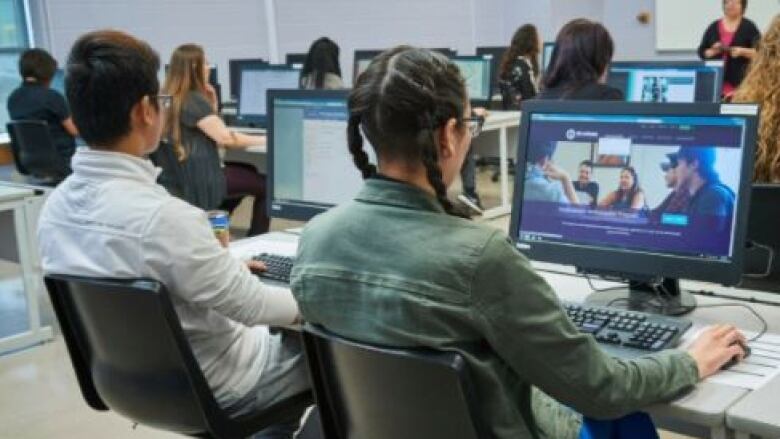New STEAM academy graduates students with high school, college diploma
School still accepting student transfers until Sept. 30

Brantford's STEAM academy opens its doors to studentstoday, and its first graduating class will leavewith a high school diploma and a college certificate in hand.
The highschool is run by Six Nations Polytechnique and isthe first of its kind in Canada, principalAaron Hobbs told The Morning Edition's host Craig Norris.
Students enroll for Grade 9, start taking college-level classes as early as Grade 10, and are expected to take four to six years to graduate from what the school is calling "Grade 14." They leavewith an Ontario Secondary School Diploma and a two-year Ontario College Technician Diploma and no student debt.
Essentially, said Hobbs, the school is "embedding the college experience into the high school experience."
STEAM: science, tech, engineering, art, math
"The current education system hasn't changed a lot in many decades," said Hobbs, and in that time, employer expectations have changed. It's now difficult to enter the workforce with just a secondary school diploma.
"It requires a different kind of student. One who is more prepared for the workforce, one who has different skills and [has] those skills basically as soon as they're done high school," explained Hobbs.
The curriculum is based on the Ontario secondary base curriculum, but modified. It puts a strong focus on the STEAM disciplines: science, technology, engineering, arts andmath, but alsoIndigenous knowledge and language revitalization.
Modern science meets traditional knowledge
"[Traditional knowledge] really is the core of the entire program. Basically taking the Indigenous perspective and making sure that is respected but also acknowledged for the modern really, revelation that it can be and should be."
Modern sciences, in many ways, have yet to catch up to indigenous sciences in terms of medicines, in terms of taking care of the earth, he said.
"Combining modern science with that Indigenous perspective makes a powerful tool and a well-equipped student."
Class sizes are limited to 50 students in the first year and the school is still accepting student transfers until Sept. 30.
With files from the CBC's Melanie Ferrier












_(720p).jpg)


 OFFICIAL HD MUSIC VIDEO.jpg)
.jpg)



























































































